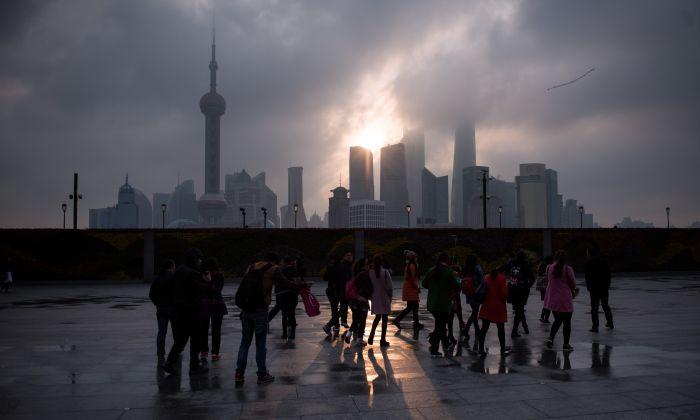Fixed asset investment in China fell by 14.5 percent in the third quarter, the worst performance in five years. But despite Beijing’s increased infrastructure stimulus spending, private-sector fixed asset investment plunged by 29.9 percent as foreign firms shifted production out of China due to the Sino-U.S. trade war and wage inflation.
China Ministry of Finance stopped approving so-called “dollar bond” sales in 2005, following the 2001 approval of China entering the World Trade Organization (WTO) that gave China unfettered access to global markets and stimulated spectacular amounts of foreign capital inflows that industrialized China at supersonic speed.
China did open up some parts of its economy to market forces, but it kept strict control of domestic electricity prices—a key industrial input—and domestic industrial borrowing costs by pegging its yuan currency to the U.S. dollar and not allowing free movement of capital for domestic savers.
As a result of its vast pool of rural labor moving to cities, China’s world manufacturing value-added grew from 11.45 percent in 2005 to 24.9 percent in 2018; while U.S. world manufacturing value-added fell from 19.9 percent to 14.96 percent.
The China WTO deal contributed to the Global Financial Crisis that Endo Economics states, “discredited the Washington Consensus doctrine of liberal economics and helped undermine the West’s confidence in the superiority of the free market.” But the crisis was not due to free markets failure and “greedy bankers”—the real culprit were the Chinese regime’s policies that pushed the foreign value added share of its exports down from 26.3 percent in 2005 to 19.5 percent in 2009, and to 16.7 percent recently.
Technology elites in places like Silicon Valley were initially immune from market share losses because China was still reliant on global open-market supply chains for “core components and materials.” But Chinese leader Xi Jinping in 2015 unveiled his “Made in China 2025” plan for a comprehensive upgrade of the nation’s industrial base to raise its share of core components and materials from 25 percent to 40 percent by 2020 and 70 percent by 2025. Endo described Xi’s plan as moving from “Made in China into Made by China.”
China’s economic boom was driven by profits from cheap rural labor moving to the cities. But the annual compensation cost per worker in China has more than quadrupled from $1,915 in 2005 to $8,170 in 2007; while U.S. annual compensation over the same period only grew by a third from $44,035 to $59,131.
Due mostly from rising labor compensation costs, China’s corporate profit rate growth has fallen from 62 percent in the third quarter of 2010 to a negative 8.8 percent in the third quarter of 2019.
By running an average balance of payment surplus of 4 percent every year since joining the WTO in 2001, China’s state-owned banks could internally finance all of the nation’s spending. But China’s balance of payment surplus shrank to 1.6 percent in 2017; 0.4 percent in 2018; and is expected in 2019 to be in deficit for the first time in 26 years.






Friends Read Free